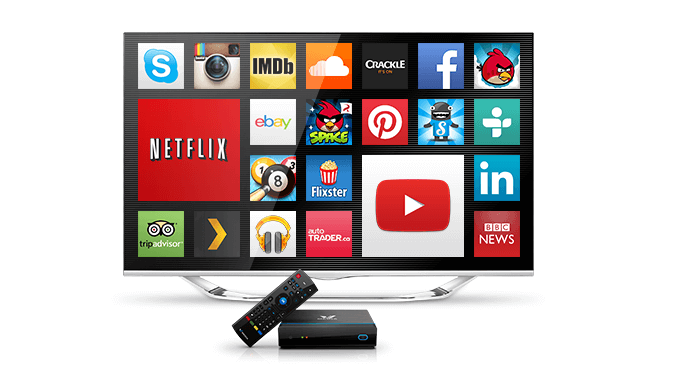
Why Internet TV is the most favorite solution for everyone now?
While we read about online streaming, there are numerous indications we come across, Internet TV is one of them. We are encountering a criterion transformation from conventional methods of broadcasting like cable or satellite TV towards IP based streaming and Internet TV that as a system has a significant capacity to operate in this transitional period. Consumers typically don’t care much about keeping the content as much as they heed about reaching the contents. This is where Internet TV becomes a thing and plays a major role. Let’s have a peek at what specifically Internet TV is, how it operates, the kinds of Internet TV services and the future of it.
What is Internet TV?

It applies to Internet-based Protocol Television where internet is utilized to carry TV programs and Videos that are both live or on as video on demand. It allows digital television channels to be presented to the subscriber over the Internet with the help of broadband or internet connection. It is somewhat distinct from the digital video that is reached by millions of clients on websites such as YouTube but it yields quite a bit of the same style and universe. Furthermore unlike conventional cable or satellite connection, in Internet TV various TV sets can work with a single subscription inside a home. Internet TV provides the spectators the combined benefit and satisfaction of being able to choose the program they want to see whenever and wherever they feel like watching it apart from tuning into any Live TV shows that are being displayed currently.
To learn how Internet TV is separate from conventional TV, let’s examine the conventional method of seeing TV with Internet TV. Cable and satellite both work by allowing users to “tune in” to particular channels inside that signal and the primary exception is that cable is through a wired connection whereas satellite is wireless.
Internet TV utilizes Internet protocol (IP) based network to transfer TV channels to clients’ set-top box. Internet networks deviate from cable and satellite by proposing contents through the same internet-based services such as email, websites, and other Internet-based services. As we will see discussed further in this section, IP or Internet Protocol is the expression that is utilized for transporting data packets among computers connected to the internet network. The customer demands and receives TV Shows and Video content is delivered to the watcher via Internet Protocol (IP) based networks rather of cable or satellite. Unlike cable or satellite where content is transmitted in real time, on a broadcast and skip the model, IPTV has the capacity to save the contents on servers and allows users to demand the content over the Internet at any time.
How does Internet TV work?

Internet TV is extremely comparable to browsing the internet than conventional channel surfing. It simply uses the internet which is a transmission tool to transfer the videos to the customers. While the consumer clicks on any TV program or demands the video, video from separate sources is distributed into data packets and transferred over the internet. Video servers broadcast programs over fiber-optic cable to subsisting households through the internet connection.
Internet TV Structure
Based on the network structure of the Internet TV distributor, there are two foremost examples of Internet TV structure that can be recognized for Internet TV. The main structure design is a comparatively simple and straightforward to operate solution. Because all media content is maintained on localized servers, it does not need a large content delivery arrangement. The centralized structure is regularly sufficient for networks that contribute approximately miniature video-on-demand contents
The distributed structure is just as scalable as the centralized design, notwithstanding, it has bandwidth usage benefits and integrated system administration hallmarks that are necessary for operating a massive server network. Speculators who intend to extend a comparably big system should, accordingly, reconsider achieving a distributed structure design right from the origin. Distributed structure demands smart and advanced content delivery technologies to expand efficient transmission of multimedia contents over the service provider’s network. Structure specification of a standard Internet TV network.
Telecast content from Satellites and Regional Antennas are obtained by the central unit. The central unit is where live TV channels are encrypted, encoded and transferred in the form of IP multicast streams. The Central unit will additionally carry the Live Streaming Servers, Video on Demand servers and platform and is where on-demand video assets are saved and served as IP unicast streams when a user creates a request. The VOD platform may sometimes be established with and contemplated part of, the Internet TV’s central unit.
The demanded videos and channels are distributed to the client through the delivery network which consists of a strong internet structure through fiber internet from the Internet TV distributors point.
The spectator will experience this signal at their end through their local or chosen internet service provider which can differ from a variety of choices like broadband or fiber optic.
Some Internet TV providers offer their services through a special set-up box. A set top box is the device of endpoint machine that decodes and decrypts TV and VOD streams for presentation on the TV screens. This STB is combined with the clients’ internet connection and utilizes the internet to present the video and channel to the client.
While this is a common standard of an Internet TV structure type, due to an extended diversity of service providers available in the market today and the IT alternatives available in the market, any service provider may choose to execute a slightly modified structure that satisfies their needs, geographic area, endpoint internet connectivity, and demands.
Examples of Internet TV services
Aside from broadcasting traditional TV channels, the following interactive services are also provided through IPTV: VOD: Special presentation of video content to a client. It enables users to see any movie from the VOD media library. Pay Per View: It is a pay-per-view video service designed for many users submitted to a VOD service. The content transmitting calendar is organized before and clients can view at the schedule and see content based on their interest.
Time Shift: Time-shifted TV allows subscribers see live broadcasts later so they can watch and resume at their convenience time. Rewind choice is additionally provided for TV programs.
Live Television: With or without interactivity attached to currently transmitted TV shows. Current state and future of Internet TV Internet TV has been on a constant extension path in the past years. The total number of global Internet TV clients has now reached the 160 million point. Currently, Europe and Asia are the front regions in terms of the overall subscribers.
For testing a reliable system, start here or become an IPTV reseller and earn money.